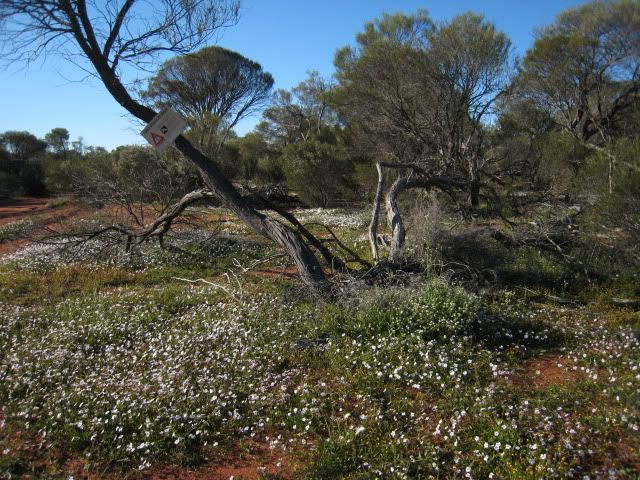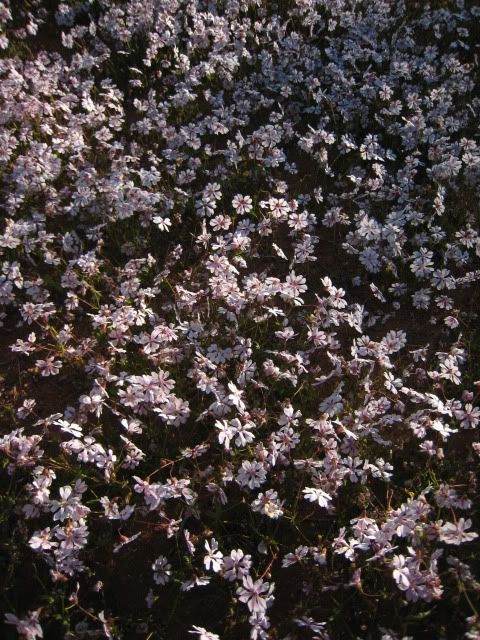Pink velleia, Rosy velleia (Velleia rosea S.Moore).
This little herb in the Goodeniaceae family is a cheery addition to the inland, semi-arid to arid regions of midwest Western Australia. With a little winter rain, you'll find these wee, pink or lavender flushed flowers in spots and dots and fits and starts. After a decent soaking of welcome winter rainfall, this annual will form a carpet of colour that can transform a parched stand of straggely mulga (Acacia aneura) or ugly roadside rest bay (usually littered with pie-wrappers, toilet paper and beer bottles) into a little, exquisite floral wonderland.
This is one beast that I take for granted as common, but really is an endemic species of Western Australia and significant component of the winter 'desert ephemeral' flora. In flower, Velleia rosea is distinctive because of the large flowers (c. 15. - 2 cm diam., petals 1.3 cm long). But when in fruit, it can be easily confused with Velleia cycnopotamica, which has far more dainty, smaller flowers (c. 1 cm diam.) with narrow petals (corolla lobes lacking wings). Both species are sprawling little herbs, with a basal rosette of leaves and few-branched inflorence stalk with flowers arranged in cymes.
I didn't notice until it was pointed out to me by a hopeless romantic that the petals were indeed heart shaped. I just refered impassively to them as emarginate or cordate or winged, and didn't think of the flowers in any emotive way. But there ya go - they're heart-shaped and pale rose in colour, with a blush of deeper rose-magenta in the throat. I will note that descriptions of flower colour may vary with the observer, but I would hesitate to describe the colour as fuchsia and settle on rose, lilac, pale lavender or pale pink, ranging to white.
Whatever your choice of colour description, make sure you take the time out to stop for a rosy flush of Velleia rosea on a midwest winter roadtrip.




No comments:
Post a Comment